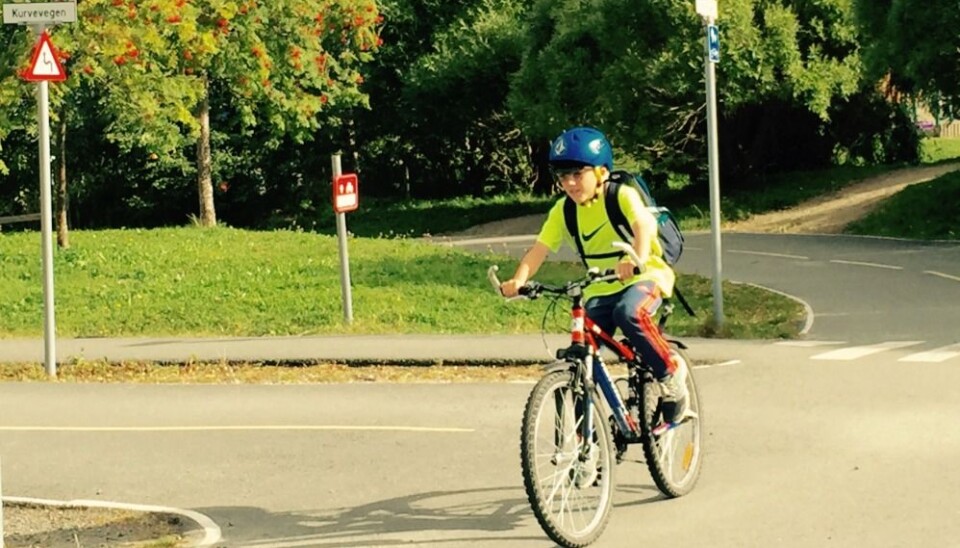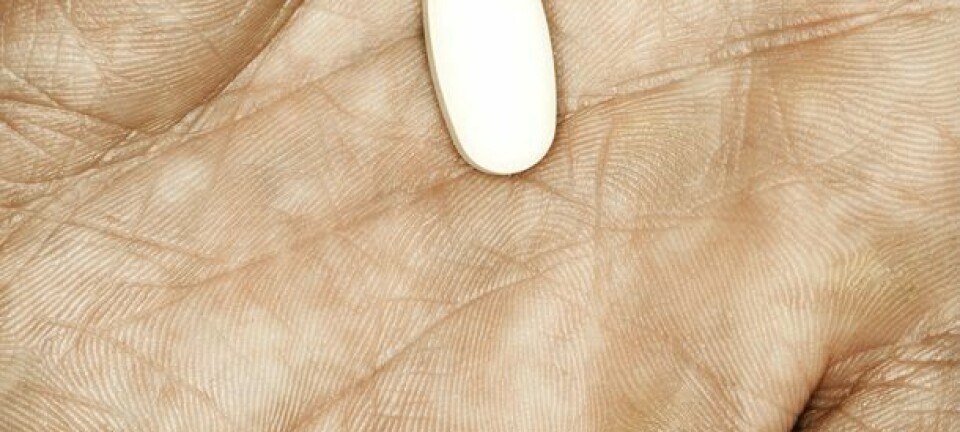An article from Norwegian SciTech News at SINTEF

How attentive are children in traffic?
The answer is “not very” if we’re to believe the results of research trials carried out last year involving 59 children.
The trials were carried out at the Eberg Children’s Traffic Instruction Centre in Trondheim, where a miniature road system has been laid out where children can practice manoeuvring in traffic in safe surroundings.
Researchers equipped the children, aged between 8 and 12, with special glasses (a Tobii Pro eye tracking system), before giving them various exercises to complete on their bikes.
Sensors in the glasses record the children’s eye movements and attention allocation at frequencies of 50 times per second. The glasses are also installed with a 3D camera that films what is happening as the children cycle round.
“The film shows where in their surroundings the research subjects fix their attention”, explains SINTEF Senior Researcher Dagfinn Moe.
“This provides us with a raw data file containing about 1.7 million fixation points which we will now analyse in the context of the test exercises assigned to the children. Our aim is to find out how proficient children are at consciously adhering to a plan and focusing their attention. The results will give us indications as to what cycling instruction in schools should focus on, and provide us with new knowledge about when it is safe for children to start cycling independently in traffic”, he says.
In safe surroundings
The task the children were given involved cycling along a pre-determined 350 metre circuit, along which they were provided with distractions in the form of three powerful flashing lamps.
Initially, in the so-called “Go” phase, the children cycle the course twice under instruction to look at the flashing lamps. They are then allowed a short break after which they were instructed to repeat the two circuits but not to look at the flashing lamps (the “NoGo” phase).
Dagfinn Moe, who is heading this research project, has been working for many years to bring together knowledge from neuroscience and combine it with people’s behaviour and performance in traffic.
Key topics in his research include risk willingness, learning, child and adolescent development and performance capability.
“There is a constant interaction between neurobiology and the surroundings we inhabit”, explains Moe.
"A child’s brain is in a constant state of change, involving the gradual development of many functions such as attention control. It is this we want to look into during this study”, he says.
“Cycling in traffic requires more than just keeping your balance”, he says.
“You have to take in and interpret what the traffic is doing, make decisions and take action all within variable frameworks of time and distance. In other words – a perfect exercise for this type of research”, he says.
Your task is: don’t look at this!
The challenge for the children was to follow instructions by planning not to be distracted by looking at the lamps (proactive inhibition).
“This is a demanding task for a child because the neural networks located in the brain’s prefrontal cortex have not yet developed the robustness and quality found in adults”, says Moe.
In other words – a child’s ability to self regulate, or exercise self-control, is being put to the test. This proved to be a very challenging situation for many of the children.
The results showed that all the children (100 per cent) had looked at the lamps during the “Go” phase, and that during the “NoGo” phase, as many as 40 per cent also looked at the lamps despite the instruction not to do so.

Here is an example of data acquired during the “Go” phase. The image on the left shows the fixation points. The colour codes represent different grades where red represents third grade children, green – fourth grade, and blue – fifth grade. There were no differences between grades in terms of how the children fixed their attention on the lamps. The image on the right shows a later, processed, version of the fixation points and indicates where the children have mainly focused their attention, and that fixation on the lamp has been repeated and prolonged (indicated by the red colour).

This image shows that the fixations are associated with the road ahead, but that many children have nevertheless focused their attention on the flashing lamp. When the children look at the lamp, it is only a brief glance. Nevertheless, it demonstrates that they have failed to avoid being distracted by the lamps as they had planned.
Boys versus girls
The researchers also discovered that there were no, or only small, differences between boys and girls when it came to their ability to focus attention. Nor was there any significant difference between participants on the basis of age.
On the other hand, there were major individual differences across both gender and age when it came to self-control in the face of distractions.
“This test was easy for the children to perform and was carried out in a safe, predictable and relaxed setting”, says Moe.
“In real traffic situations they will encounter many stress factors which will influence more considerably than in this exercise their ability to control their attention”, he says.
Safer in traffic
Bård Morten Johansen at the road safety organisation Trygg Trafikk believes that these findings are very interesting and important.
“There is a general increase in interest in cycling in society as a whole, and the public authorities are aiming both to promote more cycling, and to encourage people to start cycling at an earlier age”, he says.
We have many general theories about how our brains mature. On the basis of these, the current recommendation is that children can cycle to school once they are 12, but that ultimately parents can decide when they believe it is safe for their children to cycle in traffic.
Johansen believes that the new findings demonstrating the existence of major individual differences, and the fact that there is quite a large proportion of children between 8 and 12 who are unable adequately to focus their attention in traffic, will have significant impact.
“It is important to inform parents about this, but we will also be working to integrate this new knowledge into the cycling instruction programmes run in primary schools”, says Johansen. He goes on to say: “Today there are general recommendations advising that children can cycle to school from the age of 12, with the proviso that ultimately their parents can decide when it is safe”, he says.
Teacher support
The researchers have involved many teachers in the project. Their role is to assist by implementing the findings from this experiment in new instructional approaches to cycling.
When this process is complete, the new programmes will be tested in collaboration with the teachers and children as an extension of the project.
The plan is to carry out “before and after” tests in order to ensure that we obtain an educational programme that actually works.
The project is being funded by Trygg Trafikk, the Sør-Trondelag county traffic safety board (FTU), Trondheim municipality’s “Green Initiatives Package” (Miljøpakken) and Bodø municipality.
































